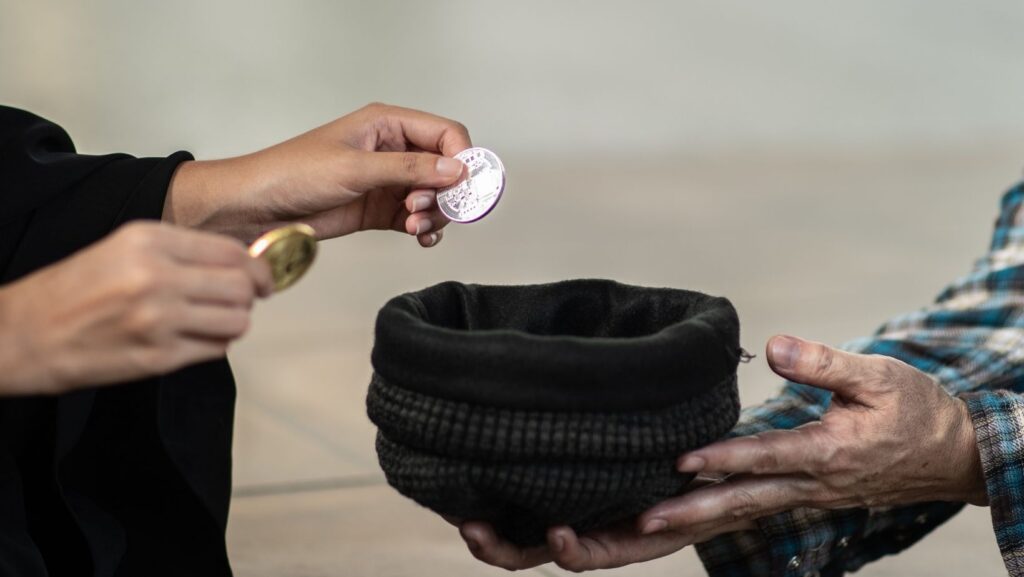
How Much Money Does a Panhandler Make
Panhandling, the act of asking strangers for money on the streets, has long been a topic of curiosity and debate. Many people wonder just how much money panhandlers make and whether it is a sustainable income.
While panhandling may seem like an unpredictable and unreliable source of income, some panhandlers are able to make a surprising amount of money. The amount earned can vary greatly depending on several factors, including the location where panhandling takes place. Urban areas with high foot traffic tend to offer more opportunities for panhandlers to receive donations. Additionally, the time of day can also impact earnings, as certain hours may be more lucrative than others. By understanding these variables, we can gain insight into the potential financial outcomes of panhandling.
It’s important to note that panhandling is not a guaranteed way to make a substantial income. The amount of money a panhandler can make depends on various factors, including their individual approach and the willingness of people to donate. Some panhandlers employ creative strategies or share compelling stories to elicit empathy from passersby, which can increase their chances of receiving donations. However, it’s crucial to remember that panhandling is a challenging and often stigmatized activity, and the income it generates may not be enough to meet basic needs.
Factors Influencing Panhandler Income
Location
The location where a panhandler operates can greatly impact their earnings. Busy urban areas with high foot traffic tend to offer more opportunities for donations. City centers, shopping districts, and tourist areas are popular locations for panhandlers due to the larger number of potential donors passing by. It’s important to note that different regions or neighborhoods within a city can also have varying levels of generosity, which can affect the amount of money a panhandler makes.
Time of Day
The time of day plays a significant role in a panhandler’s income. Rush hours and lunch breaks, when people are more likely to be out and about, can be prime times for receiving donations. Additionally, evenings and weekends might offer more generous donors who are in a relaxed and giving mood. Conversely, panhandling during off-peak hours may result in lower earnings since there are fewer people around to make donations.
Day of The Week
The day of the week can also influence a panhandler’s income. Weekdays generally have higher foot traffic due to people commuting to work or running errands. On weekends, people may be more inclined to be out and about for leisure activities, which could potentially lead to more donations. However, it’s important to consider that different cities or regions may have different patterns of weekday versus weekend foot traffic, which could impact overall earnings.
Season
Seasons can impact panhandler income as well. During warmer months, people tend to spend more time outdoors, increasing the chances of encountering panhandlers. Additionally, holidays and festive seasons might elicit more generosity from individuals in the spirit of giving. On the other hand, colder months or inclement weather can decrease foot traffic and, consequently, the amount of money panhandlers receive.

Strategies For Maximizing Panhandler Income
Selecting High Foot Traffic Areas
Choosing the right location is crucial for panhandlers in order to maximize their income. High foot traffic areas such as busy city centers, popular tourist spots, and transportation hubs can significantly increase the chances of receiving donations. By positioning themselves in areas where there is a constant flow of people, panhandlers can increase their visibility and the likelihood of attracting potential donors.
Dressing For Sympathy
The way panhandlers present themselves can significantly impact their income. Dressing in worn-out clothing or clothes that reflect their current situation can elicit more empathy from potential donors. By appearing disheveled or wearing torn clothing, panhandlers can create a visual representation of their hardships, increasing the likelihood of receiving donations.
Engaging with Passersby
Interacting with people passing by is an effective strategy for panhandlers to increase their income. Initiating a friendly conversation, expressing gratitude for any contributions, and sharing personal stories can help form a connection with potential donors. Building a rapport with individuals can foster a sense of compassion and increase the likelihood of receiving larger donations.
Utilizing Emotional Appeals
Tugging at the heartstrings of passersby can often result in more generous contributions. Panhandlers can use emotional appeals by sharing personal stories of hardship, loss, or struggles. By highlighting their vulnerability and emphasizing their need for assistance, panhandlers can elicit empathy and encourage more substantial donations.
Conclusion
The amount of money a panhandler can make is highly variable and depends on numerous factors. Factors such as location, time of day, day of the week, season, and public events all play a role in determining a panhandler’s potential earnings. Busy urban areas with high foot traffic tend to offer more opportunities for donations, and certain times of day, such as rush hours and lunch breaks, can be particularly lucrative.
Overall, panhandling can be a challenging and stigmatized activity, but with careful consideration of these factors and the implementation of effective strategies, panhandlers can potentially increase their earnings.










